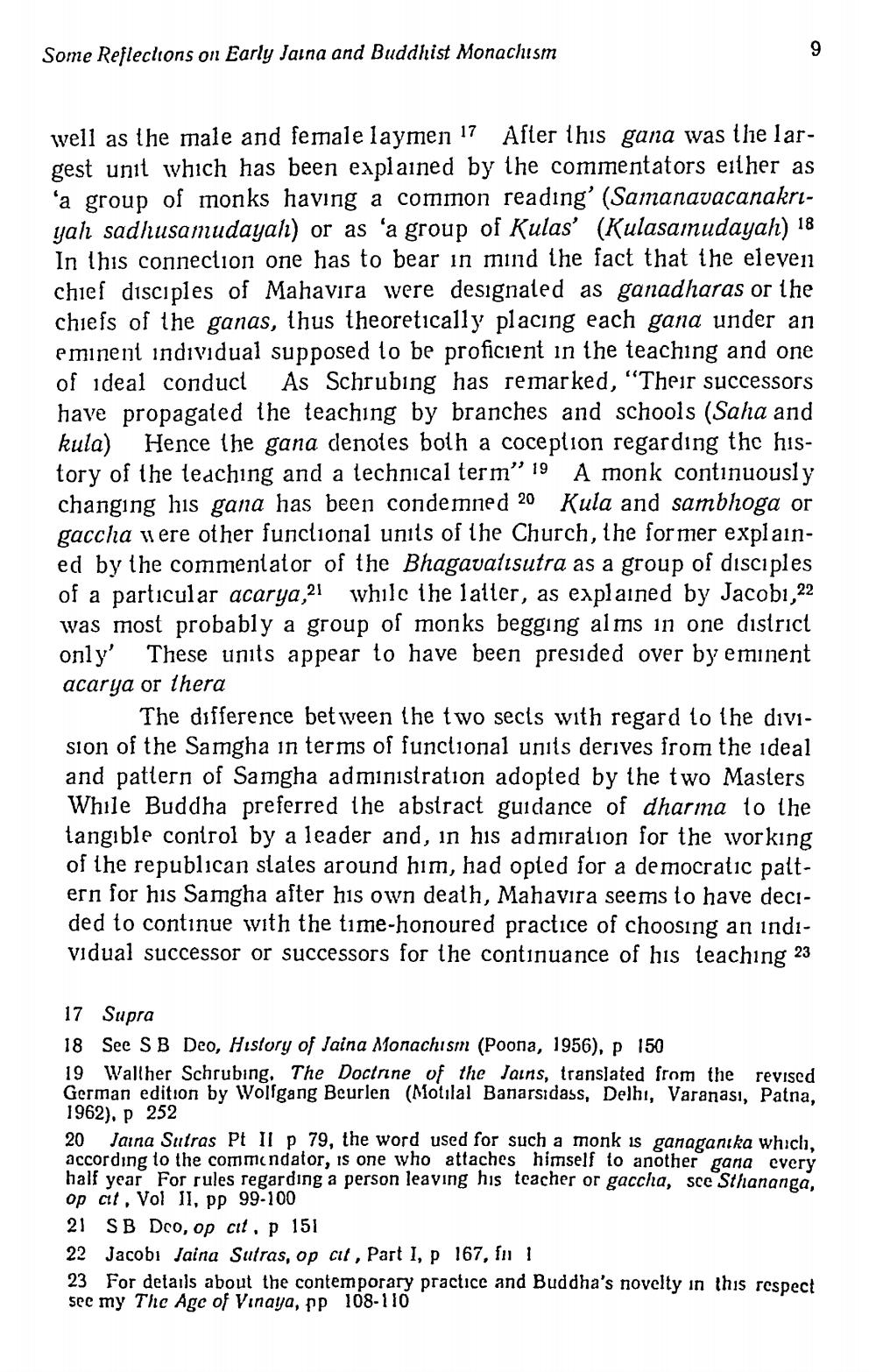________________
Some Reflections on Early Jaina and Buddhist Monachism
well as the male and female laymen 17 After this gana was the largest unit which has been explained by the commentators either as 'a group of monks having a common reading' (Samanavacanakriyah sadhusamudayalı) or as 'a group of Kulas' (Kulasamudayah) 18 In this connection one has to bear in mind the fact that the eleven chief disciples of Mahavira were designated as ganadharas or the chiefs of the ganas, thus theoretically placing each gana under an eminent individual supposed to be proficient in the teaching and one of ideal conduct As Schrubing has remarked, “Their successors have propagated the teaching by branches and schools (Saha and kula) Hence the gana denotes both a coception regarding the history of the teaching and a technical term” 19 A monk continuously changing his gana has been condemned 20 Kula and sambhoga or gaccha uere other functional units of the Church, the former explained by the commentator of the Bhagavaltsutra as a group of disciples of a particular acarya,21 while the latter, as explained by Jacobi, 22 was most probably a group of monks begging alms in one district only' These units appear to have been presided over by eminent acarya or thera
The difference between the two sects with regard to the division of the Samgha in terms of functional units derives from the ideal and pattern of Samgha administration adopted by the two Masters While Buddha preferred the abstract guidance of dharma to the tangible control by a leader and, in his admiration for the working of the republican states around him, had opted for a democratic pattern for his Samgha after his own death, Mahavira seems to have decided to continue with the time-honoured practice of choosing an individual successor or successors for the continuance of his teaching 23
17 Supra 18 See SB Deo, History of Jaina Monachism (Poona, 1956), p 150 19 Wallher Schrubing. The Doctrine of the Jains, translated from the revised German edition by Wolfgang Beurlen (Motilal Banarsidass, Delhi, Varanası, Patna, 1962), p 252 20 Jana Sutras Pt Il p 79, the word used for such a monk is ganaganıka which, according to the commendator, is one who attaches himself to another gana every half year For rules regarding a person leaving his teacher or gaccha, Scc Sthananga, op at, Vol 11, pp 99-100 21 SB Dco, op cit, p 151 22 Jacobi Jaina Sutras, op cit, Part I, p 167, in 1 23 For details about the contemporary practice and Buddha's novelty in this respect see my The Age of Vinaya, pp 108-110




